PHOTOGRAPHY
2023 Sony World Photography Awards: Creative and Portraiture
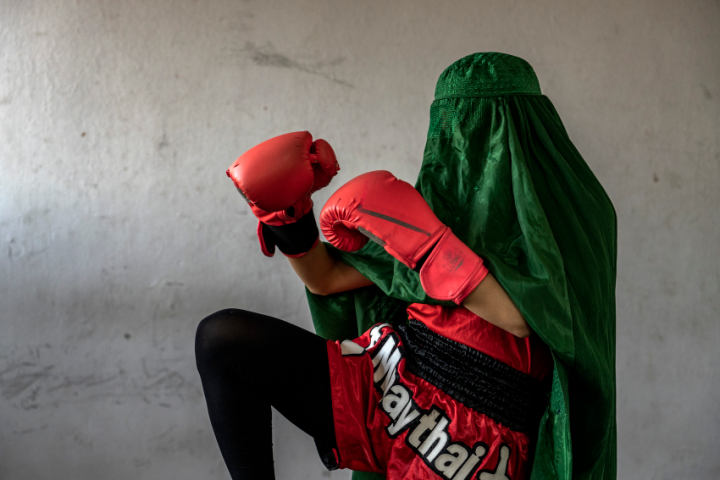
The Sony World Photography Awards returns to celebrate contemporary photography and the ways the arts reflect the world around us. Here is a selection of the images from the winners of this year's national awards in the Creative and Portraiture categories.
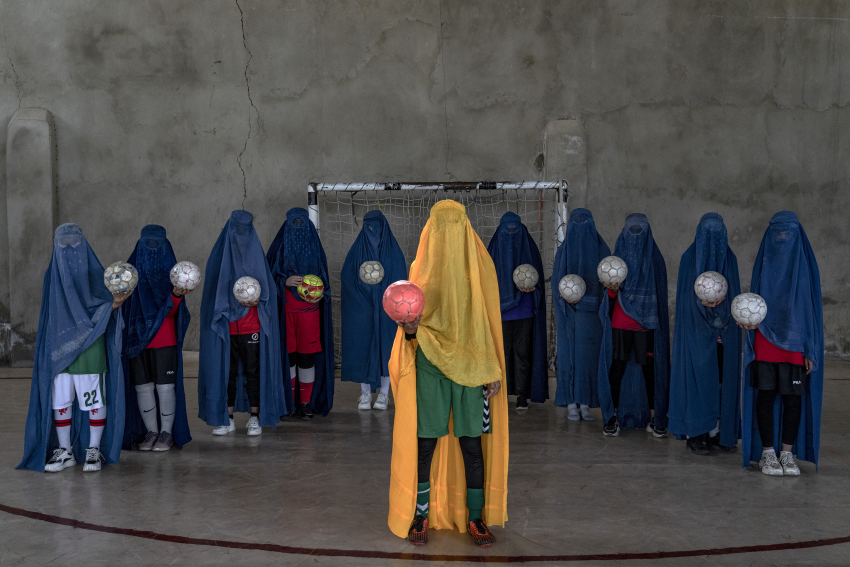
“Afghanistan’s Girl Athletes”. A girls’ soccer team poses for a photograph while wearing a burqa.
Kabul, Afghanistan, 22 September 2022. A number of women and girls who used to play sports pose for portraits with the equipment of the sports they loved. They hid their identities with their burqas, the robes and hood that cover the face, leaving only a mesh to see through. They don’t normally wear the burqa but said they sometimes choose to when they go outside and want to remain anonymous and avoid harassment. The ban on sports is just one way the Taliban has shut down life for girls and women since their takeover in August 2021. It has also barred girls from attending middle and high school; ordered all women to be thrown out of universities; severely limited women’s ability to work outside the home; and, in November 2022, the Taliban’s Ministry of Virtue prohibited women and girls from going to parks or gyms. © Ebrahim Noroozi, Iran, Islamic Republic Of, Finalist, Professional competition, Portraiture, Sony World Photography Awards 2023
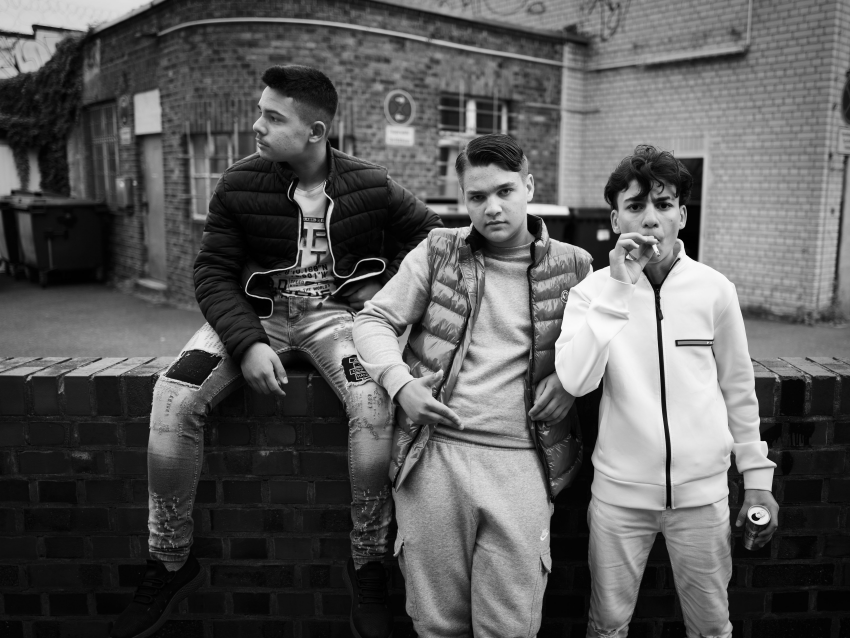
“#053kids”. Ka, Olcan and Neven (from left to right). Germany is a supposedly rich industrial country, and yet one in five children lives in poverty; in areas such as Duisburg-Hochfeld this increases to more than every second child. In an environment where different communities mix and criminal gangs sometimes clash, there is a daily struggle for legal and illegal resources. Prostitution, drugs and arms trafficking show the supposedly fast money that can be made, and make growing up here difficult. My long-term documentary project is about teenage life, social injustice, identity and belonging. The kids I photograph often don’t know their parents’ home country and nor do they feel accepted in Germany, so they use the digits 053 from the postcode of Duisburg-Hochfeld for identification instead. These are the 053kids. © Toby Binder, Germany, Shortlist, Professional competition, Portraiture, Sony World Photography Awards 2023
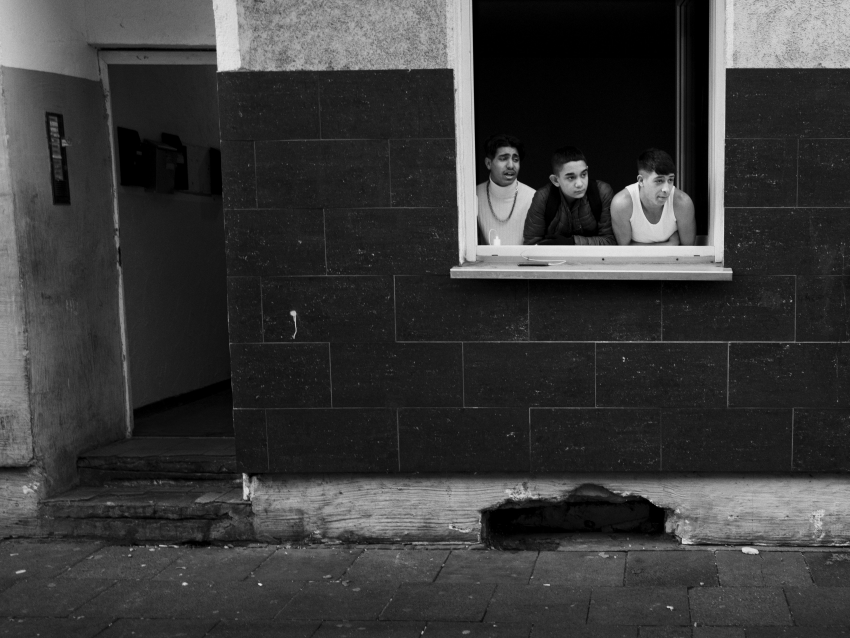
#053kids. Güno, Caner and Ramo (from left to right). Germany is a supposedly rich industrial country, and yet one in five children lives in poverty; in areas such as Duisburg-Hochfeld, this increases to more than every second child. In an environment where different communities mix and criminal gangs sometimes clash, there is a daily struggle for legal and illegal resources. Prostitution, drugs and arms trafficking show the supposedly fast money that can be made, and make growing up here difficult. My long-term documentary project is about teenage life, social injustice, identity and belonging. The kids I photograph often don’t know their parents’ home country and nor do they feel accepted in Germany, so they use the digits 053 from the postcode of Duisburg-Hochfeld for identification instead. These are the 053kids. © Toby Binder, Germany, Shortlist, Professional competition, Portraiture, Sony World Photography Awards 2023
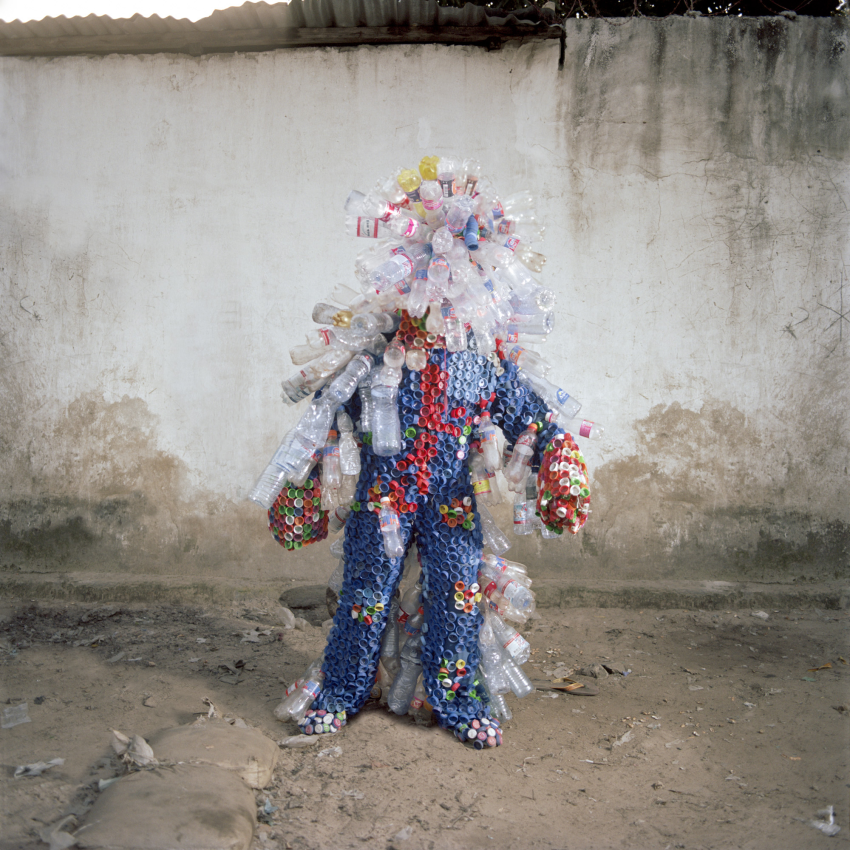
Junior Lohaka Tshonga in his Bolole Nkemi (‘I’m the idiot’) costume. Junior is a painter and performer who trained at the Academy of Fine Arts in Kinshasa. For several years the artist has been working on the theme of plastic, recycling plastic bottles found in the rivers of Kinshasa. On the streets of the Congolese capital, Kinshasa, artists raise awareness of the challenges the city is facing. The explosion of this megalopolis and its inhabitants’ increasing needs have led to a massive increase in the import of consumer goods and a significant appetite for single-use plastic, creating environmental havoc. Poor neighbourhoods suffer the most, and in this increasingly degraded environment, a group of artists questions the profusion of consumer goods and rubbish by recycling them into costumes. Gathered in a collective, they re-embody their city by creating contemporary myths and performing in the street, condemning societal issues such as a lack of healthcare, pollution, deforestation and overconsumption. © Colin Delfosse, Belgium, Shortlist, Professional competition, Portraiture, Sony World Photography Awards 2023
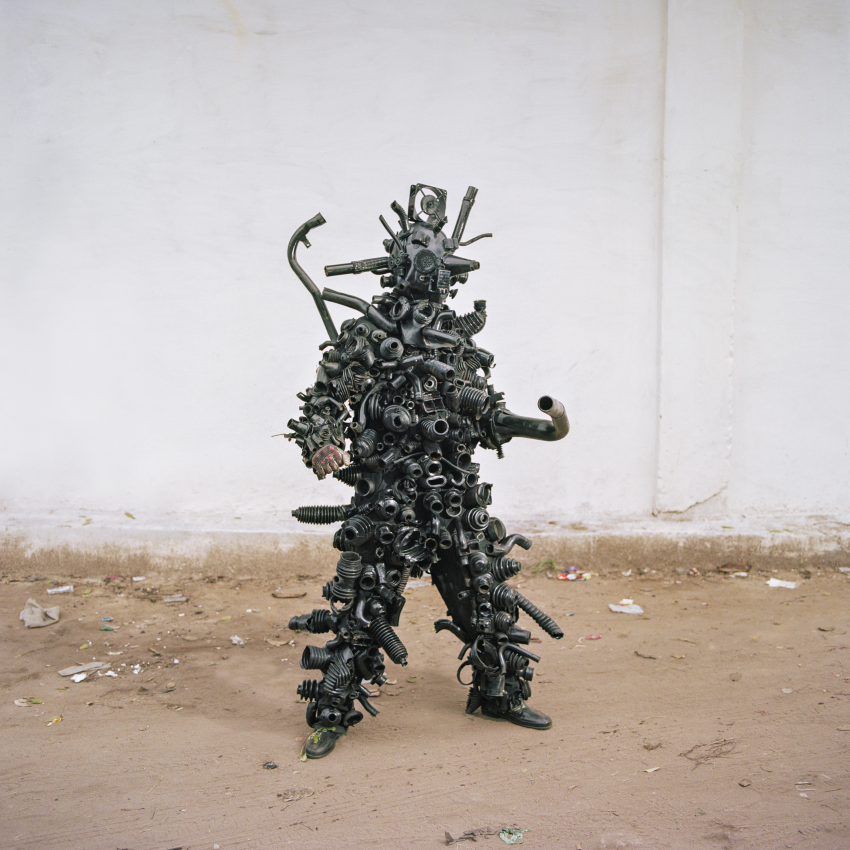
Hemock Kilomboshi posing in his rubber costume in Matonge district. Kilomboshi performs in Kinshasa’s streets to raise issues about globalisation and economic plunder in the Democratic Republic of Congo. n the streets of the Congolese capital, Kinshasa, artists raise awareness of the challenges the city is facing. The explosion of this megalopolis and its inhabitants’ increasing needs have led to a massive increase in the import of consumer goods and a significant appetite for single-use plastic, creating environmental havoc. Poor neighbourhoods suffer the most, and in this increasingly degraded environment, a group of artists questions the profusion of consumer goods and rubbish by recycling them into costumes. Gathered in a collective, they re-embody their city by creating contemporary myths and performing in the street, condemning societal issues such as a lack of healthcare, pollution, deforestation and overconsumption. © Colin Delfosse, Belgium, Shortlist, Professional competition, Portraiture, Sony World Photography Awards 2023
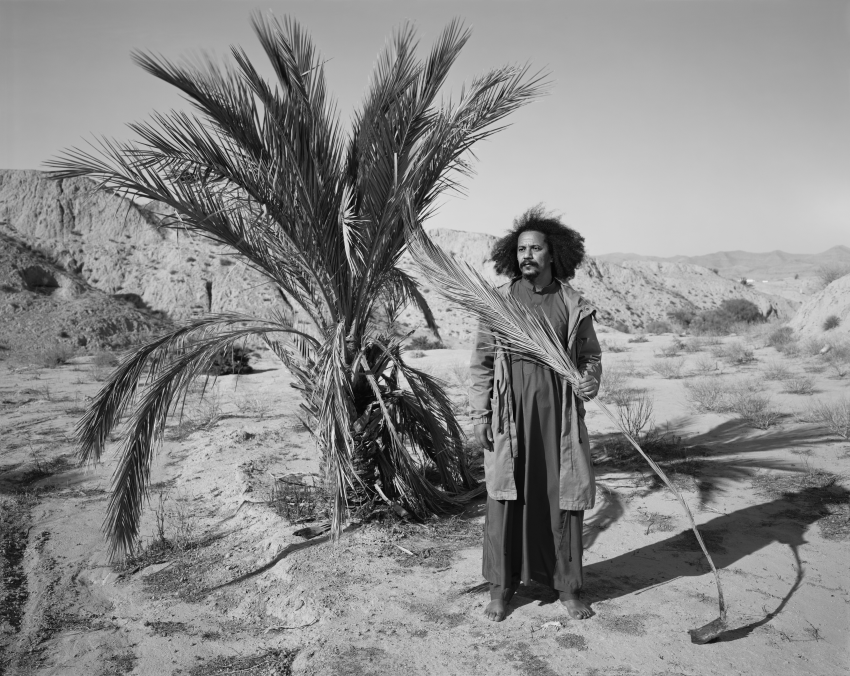
Gaddafi lookalike in abandoned regime compound. In 2011, my dear friend and photojournalist, Anton Hammerl, travelled to Libya to cover the conflict between pro-regime and anti-Gaddafi forces. On 5 April he was forcefully abducted and killed by government militia. Frustrated by the lack of progress in the investigation to find his mortal remains, in 2022 I took matters into my own hands and travelled to Libya. This previously unseen body of work is structured as a self-portrait of Anton Hammerl through the people he photographed and met, and others involved in the conflict (freedom fighters or their descendants, ex-militia, local residents, Gaddafi loyalists or lookalikes, and so on). They were selected because they resembled him, espoused similar ideas and beliefs, or reminded me of him at different stages of our friendship. This project portrays a complex story, warped by absence, that talks of the difficulty of documenting, testifying, witnessing, remembering, honouring and imagining. © Edgar Martins, Portugal, Finalist, Professional competition, Portraiture, Sony World Photography Awards 2023
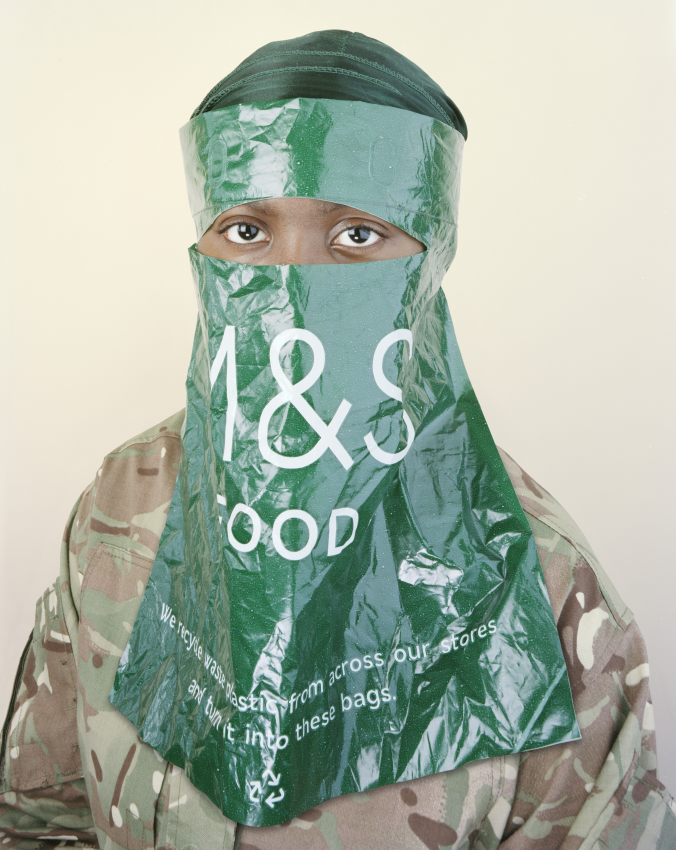
A dissident freedom fighter in makeshift burka. In 2011, my dear friend and photojournalist, Anton Hammerl, travelled to Libya to cover the conflict between pro-regime and anti-Gaddafi forces. On 5 April he was forcefully abducted and killed by government militia. Frustrated by the lack of progress in the investigation to find his mortal remains, in 2022 I took matters into my own hands and travelled to Libya. This previously unseen body of work is structured as a self-portrait of Anton Hammerl through the people he photographed and met, and others involved in the conflict (freedom fighters or their descendants, ex-militia, local residents, Gaddafi loyalists or lookalikes, and so on). They were selected because they resembled him, espoused similar ideas and beliefs, or reminded me of him at different stages of our friendship. This project portrays a complex story, warped by absence, that talks of the difficulty of documenting, testifying, witnessing, remembering, honouring and imagining. © Edgar Martins, Portugal, Finalist, Professional competition, Portraiture, Sony World Photography Awards 2023
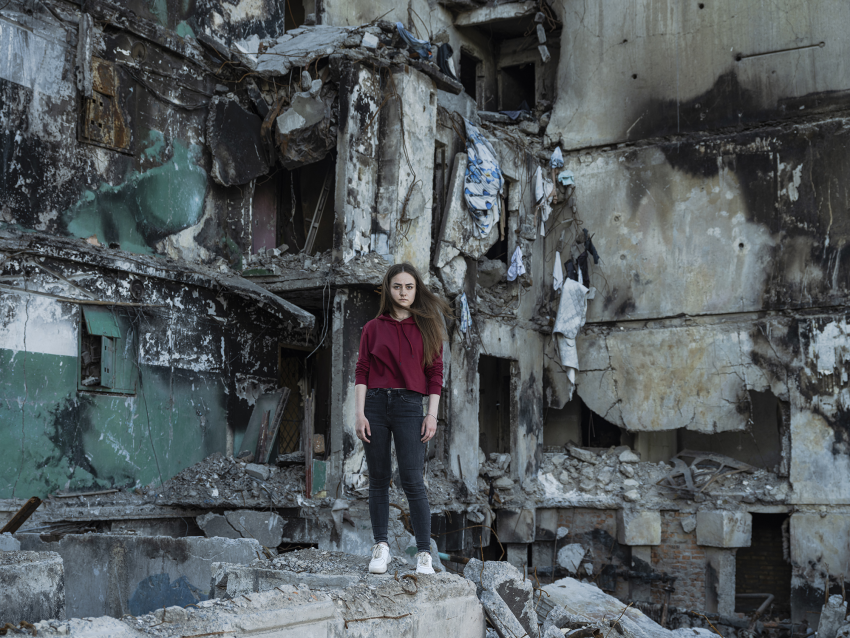
“Katya Baranivska, Borodyanka”. Katya Baranivska (22) standing in front of the building where her family’s apartment used to be, before it was destroyed by Russian bombing. Borodyanka, Ukraine. The Russian invasion of Ukraine has become a particularly brutal affair because of the heavy civilian losses and the destruction of civilian infrastructure. Since Russia launched its full-scale invasion more than 100,000 buildings have been destroyed and civilian casualties are impossible to calculate. The indiscriminate bombing of apartment blocks and residential neighbourhoods all over the country, as well as railway stations, public transport hubs, and shopping malls, have shown the unprecedented brutality of the Russian Army. Tragically, as the war continues, people living in Ukraine are getting used to it. While they continue to fight, many are trying to return to their routines, with the war becoming a haunting background to their daily lives. And, as some territories return to Ukrainian control, they reveal the atrocities and destroyed homes left behind. © Sasha Maslov, Ukraine, Shortlist, Professional competition, Portraiture, Sony World Photography Awards 2023
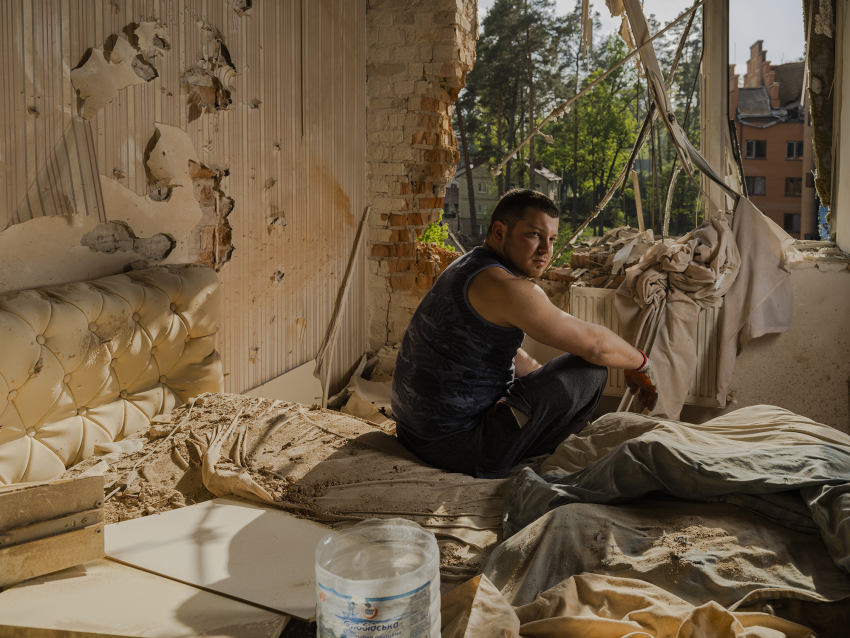
“Volodymyr Husak, Irpin”. Volodymyr Husak (28) at one of the apartments in the Dub-ok co-op building. Irpin, Ukraine. The Russian invasion of Ukraine has become a particularly brutal affair because of the heavy civilian losses and the destruction of civilian infrastructure. Since Russia launched its full-scale invasion more than 100,000 buildings have been destroyed and civilian casualties are impossible to calculate. The indiscriminate bombing of apartment blocks and residential neighbourhoods all over the country, as well as railway stations, public transport hubs, and shopping malls, have shown the unprecedented brutality of the Russian Army. Tragically, as the war continues, people living in Ukraine are getting used to it. While they continue to fight, many are trying to return to their routines, with the war becoming a haunting background to their daily lives. And, as some territories return to Ukrainian control, they reveal the atrocities and destroyed homes left behind. © Sasha Maslov, Ukraine, Shortlist, Professional competition, Portraiture, Sony World Photography Awards 2023
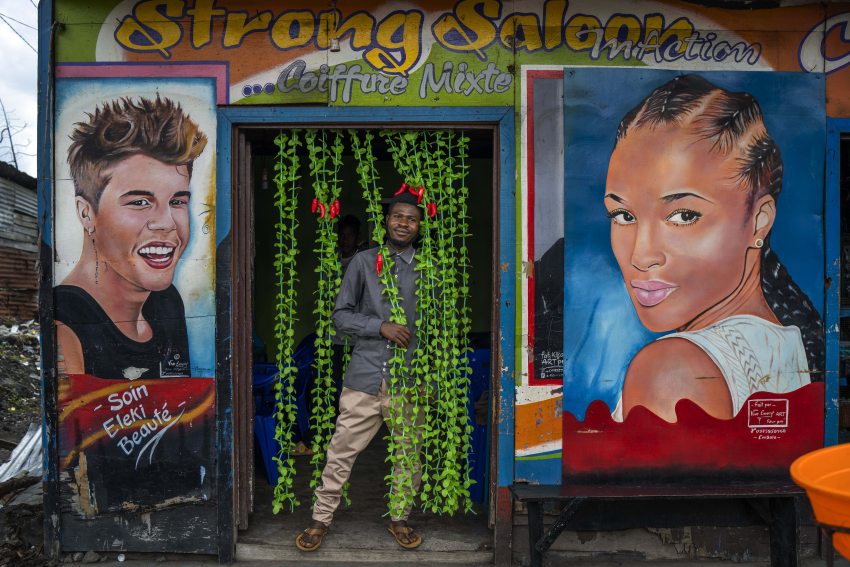
Jean Claude (27) poses in front of his hairdressing salon in Goma, Democratic Republic of Congo, 26 November 2022. On the N2 highway leading north out of Goma in the Democratic Republic of Congo, colourful hair salon storefronts hide interiors full of customers. The customers are mostly women who are ready to spend their entire day getting the perfect hairstyle, whether it’s butterfly or tribal braids, or curly hair twists. Yet while most of the work is performed by women, it seems that the salons are owned by men, some as young as 20 years old. At a time of tension and economic uncertainty, the bold names and brightly coloured storefronts bring a sense of normalcy to residents who have contended with conflict and natural disasters for decades. The Salon Mixte, the Clinique de Beauté, the Just Love salon and the Salon King are all open for business and here to stay. Despite fighting between M23 rebels and FARDC government forces north of Goma, life goes on for residents of the lakeside town. © Jerome Delay, France, Shortlist, Professional competition, Portraiture, Sony World Photography Awards 2023
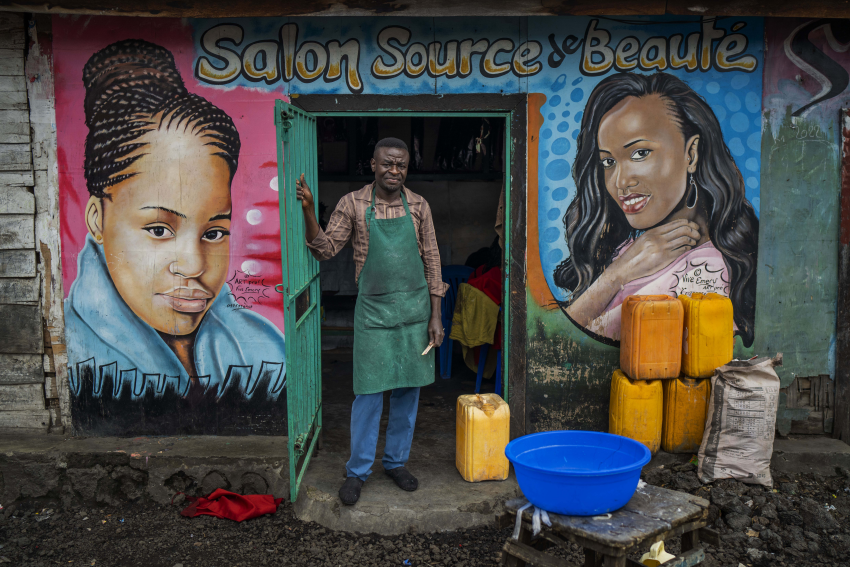
Mohimbo (48) poses in front of his hairdressing salon in Goma, Democratic Republic of Congo, 26 November 2022. On the N2 highway leading north out of Goma in the Democratic Republic of Congo, colourful hair salon storefronts hide interiors full of customers. The customers are mostly women who are ready to spend their entire day getting the perfect hairstyle, whether it’s butterfly or tribal braids, or curly hair twists. Yet while most of the work is performed by women, it seems that the salons are owned by men, some as young as 20 years old. At a time of tension and economic uncertainty, the bold names and brightly coloured storefronts bring a sense of normalcy to residents who have contended with conflict and natural disasters for decades. The Salon Mixte, the Clinique de Beauté, the Just Love salon and the Salon King are all open for business and here to stay. Despite fighting between M23 rebels and FARDC government forces north of Goma, life goes on for residents of the lakeside town. © Jerome Delay, France, Shortlist, Professional competition, Portraiture, Sony World Photography Awards 2023
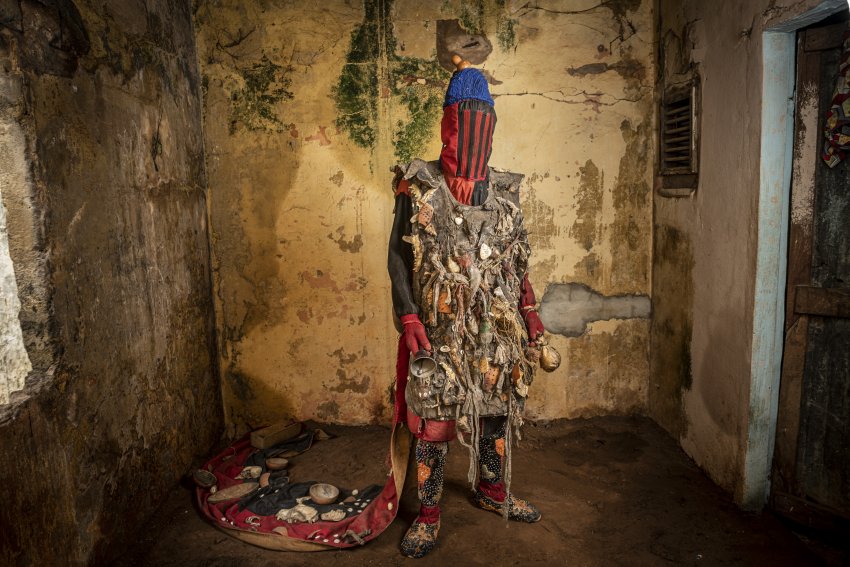
An Egungun in a voodoo convent. He is wearing multiple talismans, which provide him with a strong power, Porto-Novo, Benin. The Egungun association is a secret voodoo society that honours the spirits of their ancestors and perpetuates their memories. These ancestral spirits are believed to be in constant watch over their living relatives; they bless, protect and warn them, but can also punish them depending on whether they remember or neglect them. The spirits can also protect a community against evil spirits, epidemics, witchcraft and evil-doers, ensuring their well-being, and may even be invited to come to earth physically. When they do, the Egungun are the receptacles of these spirits, appearing in the streets day or night, leaping, dancing or walking, and uttering loud cries. The spirit is supposed to have returned from the land of the dead to ascertain what is going on, so can be considered a kind of supernatural inquisitor who appears from time to time to inquire into the general domestic conduct of people and punish misdeeds. © Jean-Claude Moschetti, France, Finalist, Professional competition, Portraiture, Sony World Photography Awards 2023
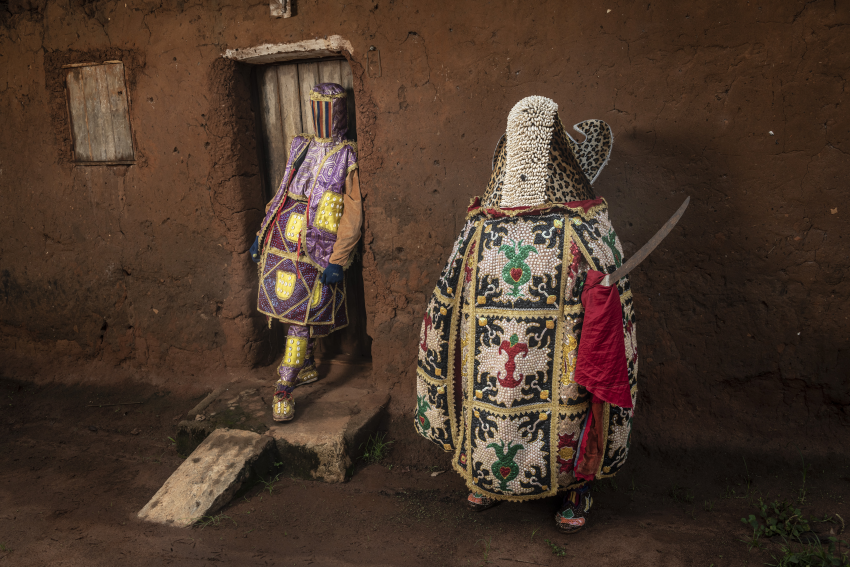
Two ‘ghosts’ pose in front of their ancestors’ house, Porto-Novo, Benin. The Egungun association is a secret voodoo society that honours the spirits of their ancestors and perpetuates their memories. These ancestral spirits are believed to be in constant watch over their living relatives; they bless, protect and warn them, but can also punish them depending on whether they remember or neglect them. The spirits can also protect a community against evil spirits, epidemics, witchcraft and evil-doers, ensuring their well-being, and may even be invited to come to earth physically. When they do, the Egungun are the receptacles of these spirits, appearing in the streets day or night, leaping, dancing or walking, and uttering loud cries. The spirit is supposed to have returned from the land of the dead to ascertain what is going on, so can be considered a kind of supernatural inquisitor who appears from time to time to inquire into the general domestic conduct of people and punish misdeeds. © Jean-Claude Moschetti, France, Finalist, Professional competition, Portraiture, Sony World Photography Awards 2023
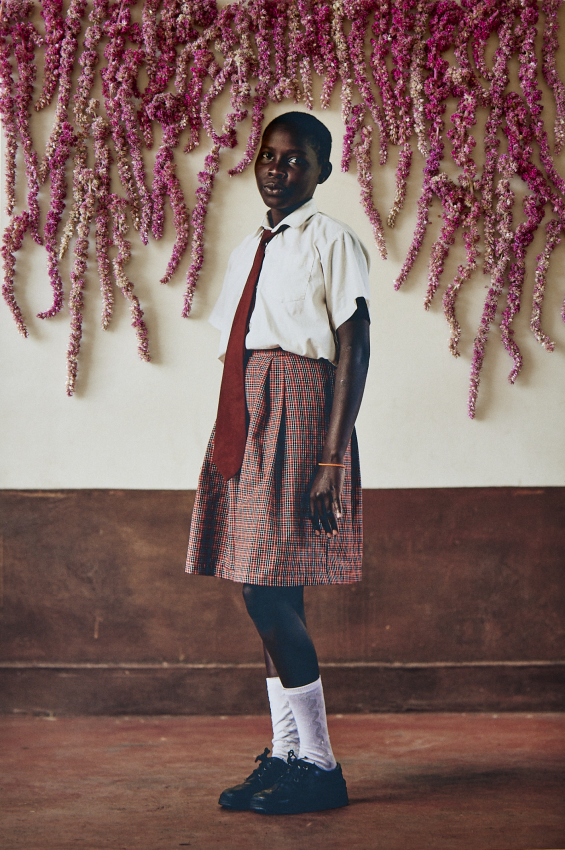
“Michealle Naeku”. Portrait of 12-year-old Michealle Naeku, a student at Kakenya’s Dream school in Enoosaen, Kenya. Naeku is an avid reader and dreams of becoming a nurse. The flowers are used to create a playful world where girls are shown exuding pride and joy. In this way the flowers are also used to reclaim their futures and dreams, and to re-imagine the narrative of child marriage. What do girls dream of? And what happens when a supportive environment is created where girls are empowered and given the opportunity to learn and dream? The Right to Play creates a playful world where girls are shown in an empowered and affirming way. Worldwide, it is estimated that around 129 million girls are out of school and only 49 percent of countries have achieved gender parity in primary education, with the gap widening at secondary school level. Every day, girls face barriers to education caused by poverty, cultural norms and practices such as FGM, poor infrastructure and violence. For this project, I worked with girls from Kakenya’s Dream in Enoosaen, Kenya who have avoided FGM and child marriage, showing what the world can look like when girls are given the opportunity to continue learning in an environment that supports them and their dreams. © Lee-Ann Olwage, South Africa, Finalist, Professional competition, Creative, Sony World Photography Awards 2023
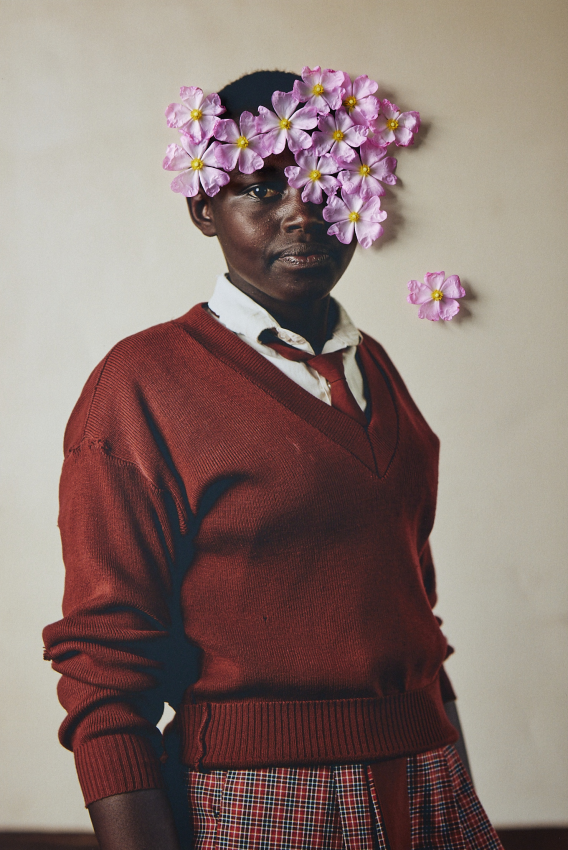
“Purity Ntetia Lopores”. Portrait of Purity Ntetia Lopores, 14, a student at Kakenya’s Dream school, who says: ‘I love art and would love to pursue music in the future.’ The flowers are used to create a playful world where girls are shown exuding pride and joy and in this way the flowers are also used to reclaim their futures and dreams and to re-imagine the narrative of child marriage. What do girls dream of? And what happens when a supportive environment is created where girls are empowered and given the opportunity to learn and dream? The Right to Play creates a playful world where girls are shown in an empowered and affirming way. Worldwide, it is estimated that around 129 million girls are out of school and only 49 percent of countries have achieved gender parity in primary education, with the gap widening at secondary school level. Every day, girls face barriers to education caused by poverty, cultural norms and practices such as FGM, poor infrastructure and violence. For this project, I worked with girls from Kakenya’s Dream in Enoosaen, Kenya who have avoided FGM and child marriage, showing what the world can look like when girls are given the opportunity to continue learning in an environment that supports them and their dreams. © Lee-Ann Olwage, South Africa, Finalist, Professional competition, Creative, Sony World Photography Awards 2023
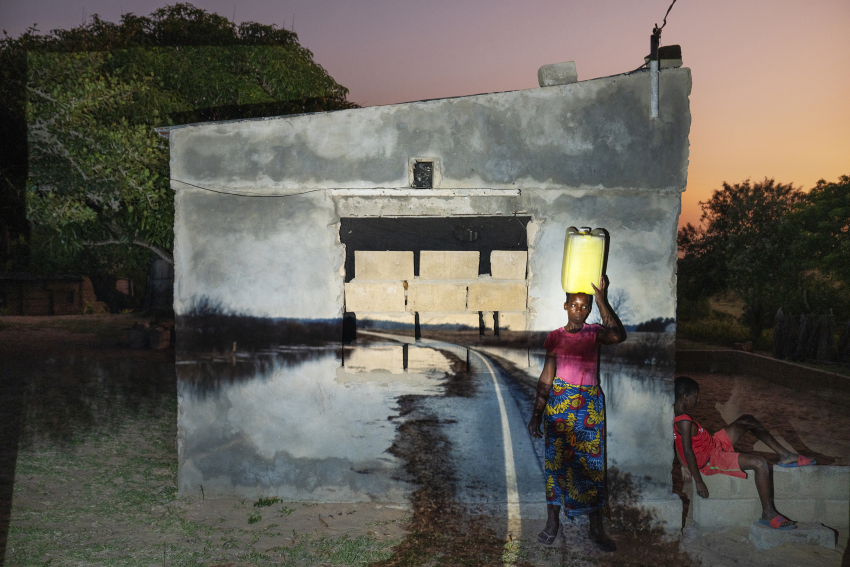
Márcia Sambo in front of her house on Inhaca island, Mozambique. Most of Mozambique’s 3.2 million subsistence farmers grow cereals and pulses in resource-poor environments where crops are rain-fed. This makes them extremely vulnerable to rising temperatures and erratic rainfall. What will the atlas that future generations study look like? How can a photograph show the future? Due to climate change, some of the most radical transformations to the world map will be visible in just a few decades. Our idea was to find a way to show what the landscape might look like in some places at the end of the century, compared to the world we live in today. Mozambique is one of the most climate-vulnerable countries. Droughts, floods and sudden storms are episodes that now alternate and repeat themselves every year, radically altering the morphology of the landscape. Using a special slide projector, we physically projected an image of the landscape’s possible transformation onto the land itself. The result is a series of complex and dreamlike photographs that become a metaphoric projection of a not-too-distant future. © Edoardo Delille Giulia Piermartiri, Italy, Finalist, Professional competition, Creative, Sony World Photography Awards 2023
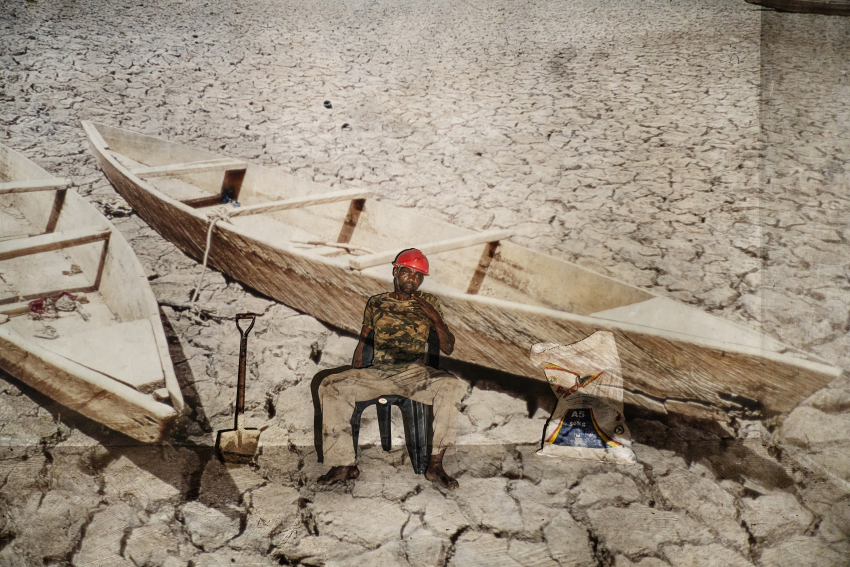
Urban fields, Jaulane, Mozambique. Fernando Nhaca (49) is a farmer and woodworker who works in the fields to support his wife and their four children. Cyclones, sudden storms and droughts are just a few examples of episodes that are repeated every year. These events particularly affect rural and marginal areas, exacerbating food security problems in smallholder farming communities. What will the atlas that future generations study look like? How can a photograph show the future? Due to climate change, some of the most radical transformations to the world map will be visible in just a few decades. Our idea was to find a way to show what the landscape might look like in some places at the end of the century, compared to the world we live in today. Mozambique is one of the most climate-vulnerable countries. Droughts, floods and sudden storms are episodes that now alternate and repeat themselves every year, radically altering the morphology of the landscape. Using a special slide projector, we physically projected an image of the landscape’s possible transformation onto the land itself. The result is a series of complex and dreamlike photographs that become a metaphoric projection of a not-too-distant future. © Edoardo Delille Giulia Piermartiri, Italy, Finalist, Professional competition, Creative, Sony World Photography Awards 2023
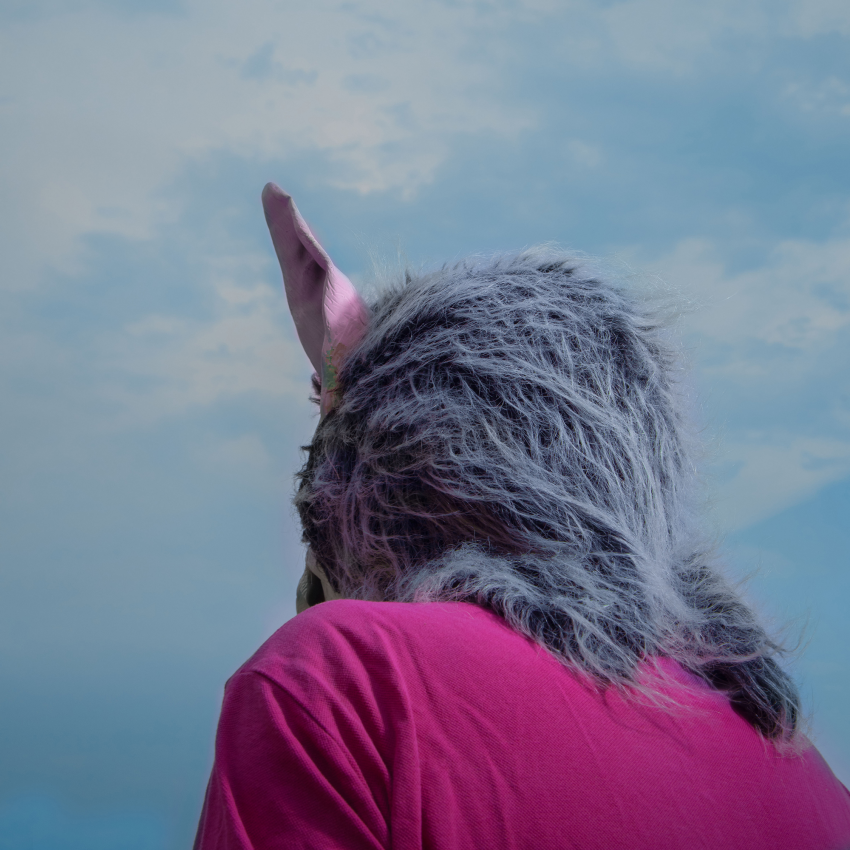
“Lupus Hominarius”. In Satriano, Italy, it was believed that ‘u’ lupu pampanu’ had a very light coat of fur, tending to white. It was often mistaken for a goat. Lupus Hominarius refers to the legends and folk tales of Calabria, Italy, surrounding the figure of the werewolf. According to folklore, you could become a werewolf as a result of a curse, or through infections, bites or pacts with the devil. The legend shared by many towns in Calabria relates to the ‘first wedding night’, in which the bride dies at the hands of her werewolf husband while the two are consummating their marriage. Very often, such tales were created to prevent women from going out alone in the village, especially at night. People would take advantage of these tales by wearing wolf masks to instil fear in local residents, preventing them from leaving their homes while they rob the village cellars. Lupus Hominarius offers a contemporary reading of the myths surrounding werewolves, recreating partial and ambiguous scenarios. © Noemi Comi, Italy, Finalist, Professional competition, Creative, Sony World Photography Awards 2023
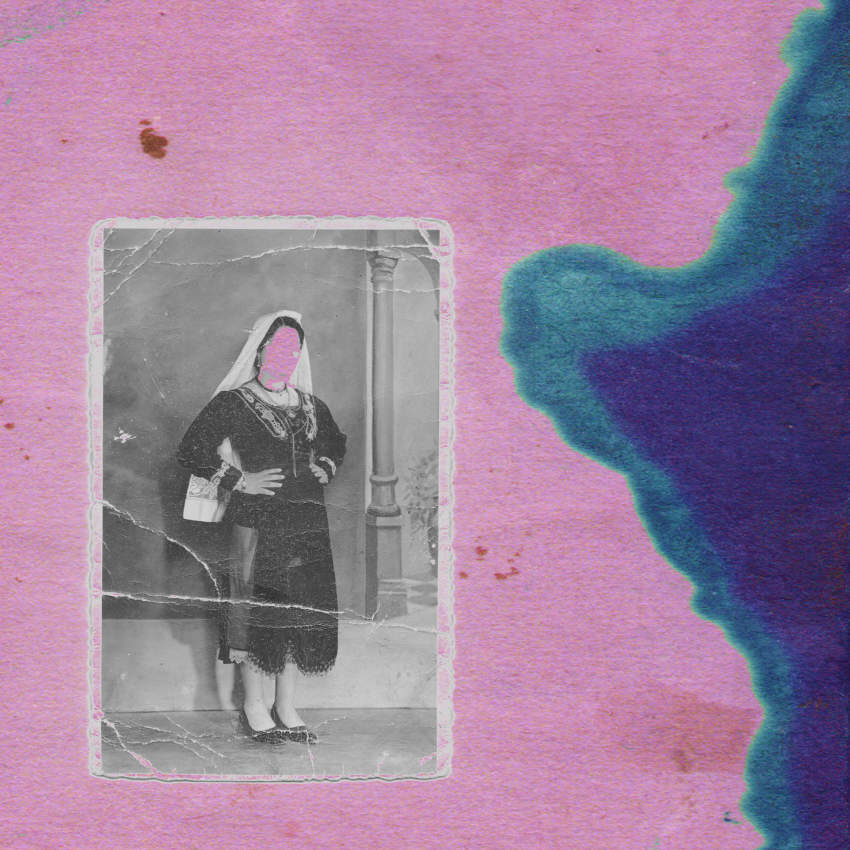
“Lupus Hominarius”. The Lycanthrope of Nicastro, daughter of Baron Arena and wife of the Count of Misano. After making her nature known, the woman was locked up inside the family castle and later burned alive. Lupus Hominarius refers to the legends and folk tales of Calabria, Italy, surrounding the figure of the werewolf. According to folklore, you could become a werewolf as a result of a curse, or through infections, bites or pacts with the devil. The legend shared by many towns in Calabria relates to the ‘first wedding night’, in which the bride dies at the hands of her werewolf husband while the two are consummating their marriage. Very often, such tales were created to prevent women from going out alone in the village, especially at night. People would take advantage of these tales by wearing wolf masks to instil fear in local residents, preventing them from leaving their homes while they rob the village cellars. Lupus Hominarius offers a contemporary reading of the myths surrounding werewolves, recreating partial and ambiguous scenarios. © Noemi Comi, Italy, Finalist, Professional competition, Creative, Sony World Photography Awards 2023
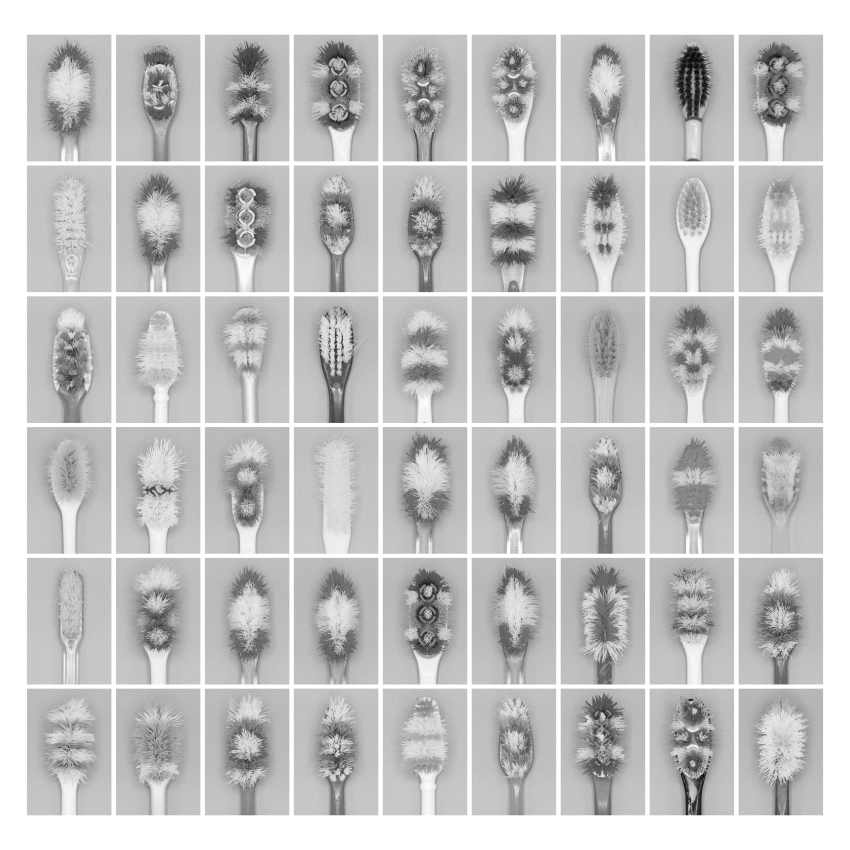
“Toothbrush (b)”. Collection of my toothbrushes, 201x-2022. New York (2022). I am a collector. Ever since I can remember, I have collected and catalogued objects as a sort of memorial. I started by collecting memories and things that I was emotionally attached to, and this developed into an obsession with piling up everyday objects. The only complication was the question of space – collecting requires a lot of physical and mental space, which led me to find ways to let things go. I have realised that to be able to throw anything away, I first need to celebrate the detachment by taking pictures of it. The composition is the result of the entire process, and the image is the achievement of the purpose. Through the image, what I have collected will somehow survive. This project is photography used as a remedy to an obsessive-compulsive disorder (OCD). © Tommaso Sacconi, Italy, Shortlist, Professional competition, Creative, Sony World Photography Awards 2023
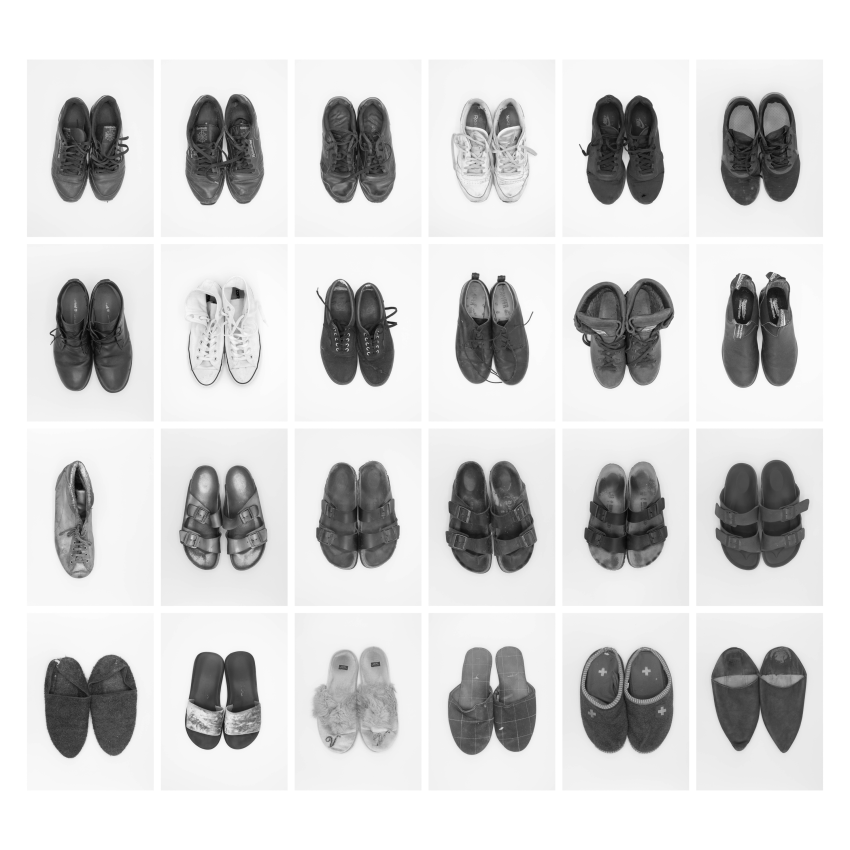
“Shoes (a; b)”. Collection of my pairs of shoes, sandals and slippers, 201x-2022. Rome / New York / Cairo (2022). I am a collector. Ever since I can remember, I have collected and catalogued objects as a sort of memorial. I started by collecting memories and things that I was emotionally attached to, and this developed into an obsession with piling up everyday objects. The only complication was the question of space – collecting requires a lot of physical and mental space, which led me to find ways to let things go. I have realised that to be able to throw anything away, I first need to celebrate the detachment by taking pictures of it. The composition is the result of the entire process, and the image is the achievement of the purpose. Through the image, what I have collected will somehow survive. This project is photography used as a remedy to an obsessive-compulsive disorder (OCD). © Tommaso Sacconi, Italy, Shortlist, Professional competition, Creative, Sony World Photography Awards 2023
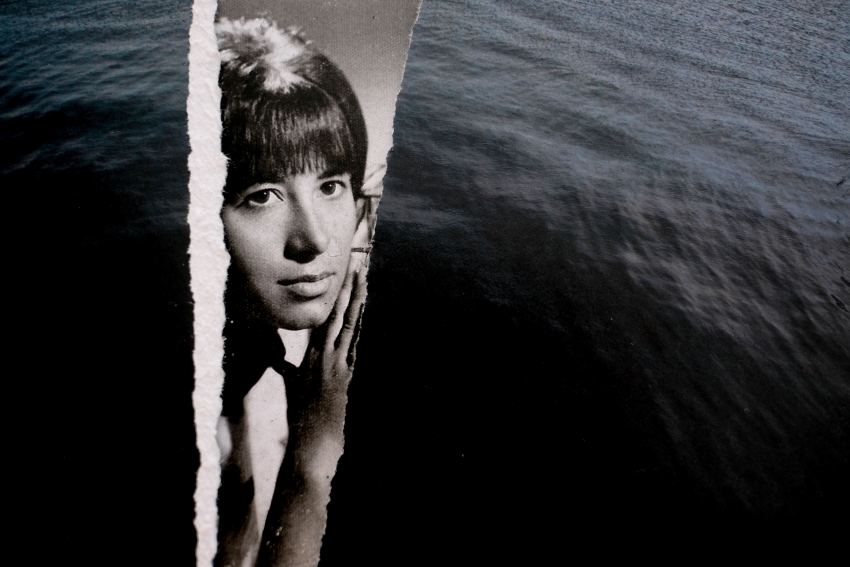
“Broken”. An old picture of my mother behind a torn image of the sea. This photographic story was born out of a need to try to understand the most intimate, emotional and multifaceted meaning of migration: looking at my family, who emigrated to northern Italy after World War 2, and at myself, who left Genoa and arrived in Buenos Aires, a city that last century saw the arrival of millions of Italians in search of a better future. Documenting this passage was useful to me, as it expanded the meaning of migration as something that not only concerns the person undertaking the journey, but extends to the whole community. Consequently, migration becomes an existential caesura that marks a before and an after. It is an event that questions the identity of the people involved, opening the way to change, but also to uncertainty; to the fear of being forgotten and the need to create new relationships. © Valentina Fusco, Italy, Shortlist, Professional competition, Creative, Sony World Photography Awards 2023
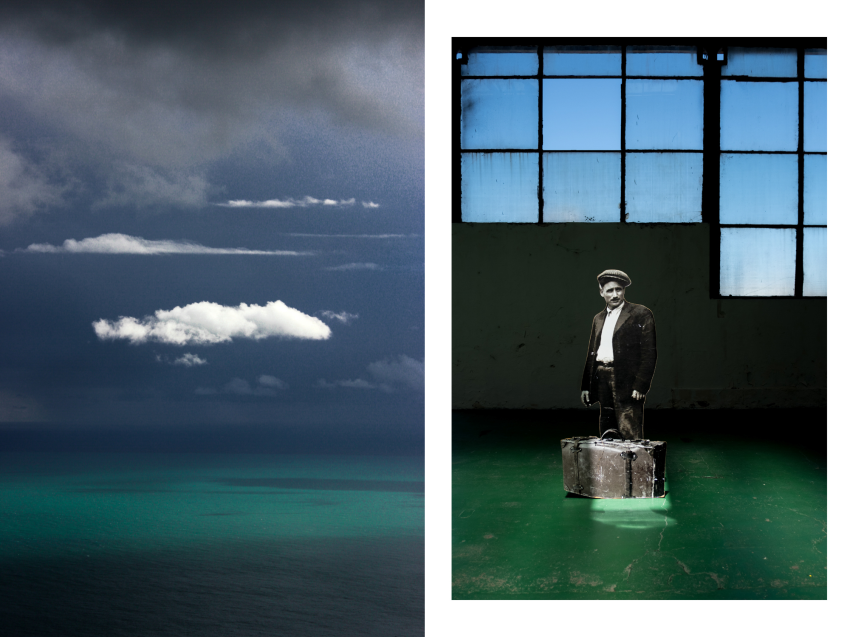
“Be Fluid”. A cloud over the Mediterranean sea and a collage of an Italian migrant on the quay at the port of Buenos Aires. This photographic story was born out of a need to try to understand the most intimate, emotional and multifaceted meaning of migration: looking at my family, who emigrated to northern Italy after World War 2, and at myself, who left Genoa and arrived in Buenos Aires, a city that last century saw the arrival of millions of Italians in search of a better future. Documenting this passage was useful to me, as it expanded the meaning of migration as something that not only concerns the person undertaking the journey, but extends to the whole community. Consequently, migration becomes an existential caesura that marks a before and an after. It is an event that questions the identity of the people involved, opening the way to change, but also to uncertainty; to the fear of being forgotten and the need to create new relationships. © Valentina Fusco, Italy, Shortlist, Professional competition, Creative, Sony World Photography Awards 2023
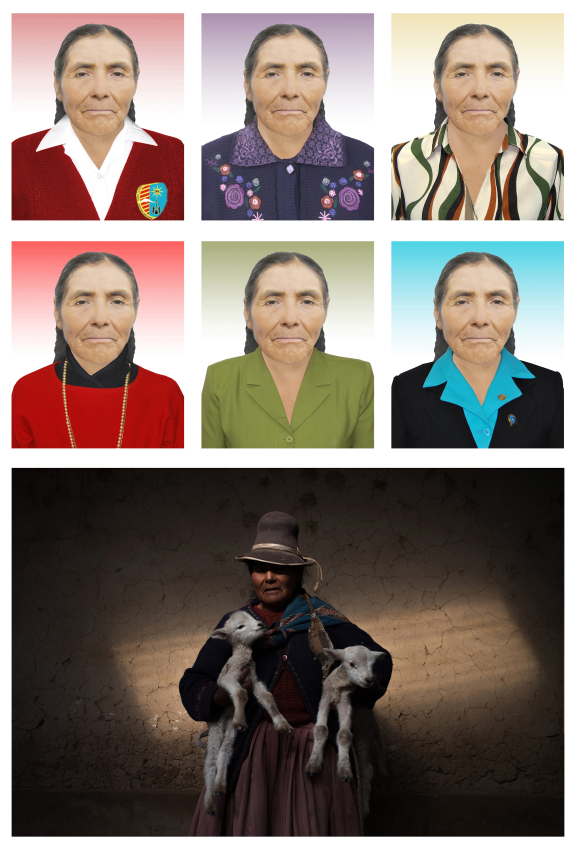
Josefina Ylachoque (68). Shepherd and artisan. The passport photos were taken by Yhon Huachaca; the portrait below was photographed by me. I am Italian and have been living in Peru for more than 3 years. I moved because I wanted to deepen my long-term mining project and better understand Peruvian culture by living it every day. As I traveled through the Andes, I visited many homes and dwelt on the photos people had hanging in their homes that represented them; they were enlargements of their passport photos. I wondered how people here perceive their image and wanted to understand more. I increasingly ask myself if it is right to represent the Andean subjects I photograph with my European culture, and I felt the need to work on this. I worked four-handedly with a local photographer (Yhon Huachaca), comparing our two photographic visions, our image culture and the way people are represented, I photographed the same subjects he photographed, but with my own vision, European and sometimes, unfortunately, a bit exotic. © Alessandro Cinque, Italy, Shortlist, Professional competition, Creative, Sony World Photography Awards 2023
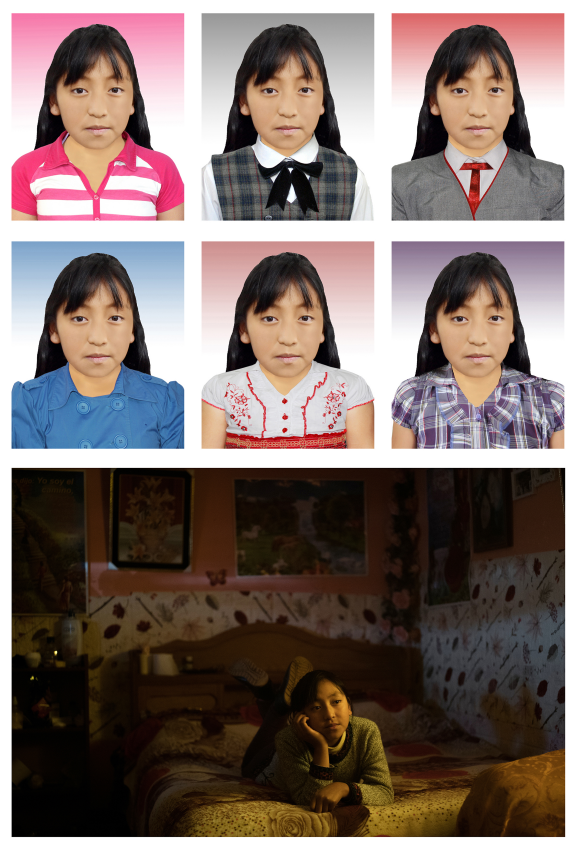
Yoseline Cutiri (10). Student. Yhon Huachaca took the passport photographs in his studio; I shot the portrait below in Yoseline’s bedroom. I am Italian and have been living in Peru for more than 3 years. I moved because I wanted to deepen my long-term mining project and better understand Peruvian culture by living it every day. As I traveled through the Andes, I visited many homes and dwelt on the photos people had hanging in their homes that represented them; they were enlargements of their passport photos. I wondered how people here perceive their image and wanted to understand more. I increasingly ask myself if it is right to represent the Andean subjects I photograph with my European culture, and I felt the need to work on this. I worked four-handedly with a local photographer (Yhon Huachaca), comparing our two photographic visions, our image culture and the way people are represented, I photographed the same subjects he photographed, but with my own vision, European and sometimes, unfortunately, a bit exotic. © Alessandro Cinque, Italy, Shortlist, Professional competition, Creative, Sony World Photography Awards 2023
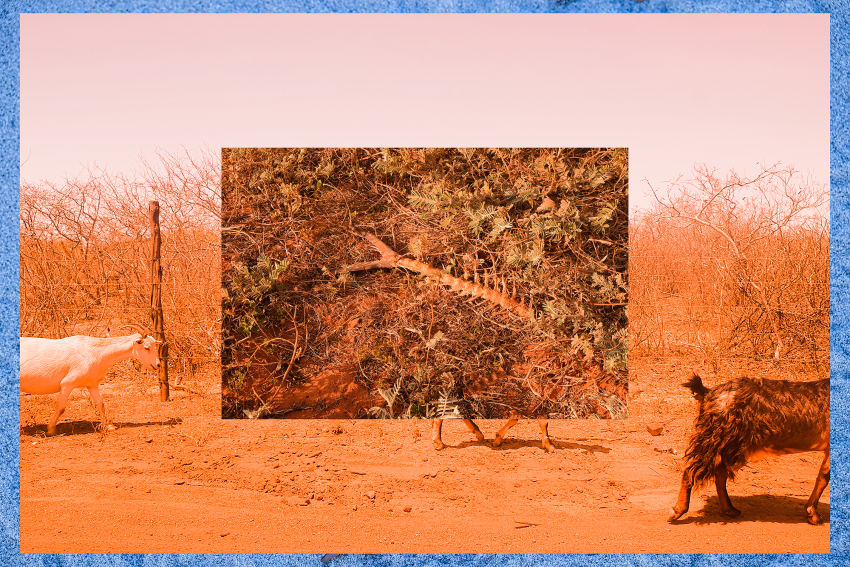
“Fly Me to the Moon”. This image combines three photographs taken in 2022, which together represent hunger and an exodus of destroyed nature. Humans live as if there is another planet available that we can call ‘home’ after we have consumed this one. Fly Me to the Moon (and you can read it as if you were singing it!) is an SOS from a runaway train heading to this imagined planet. However, this new host planet simply does not exist. It is time for us to wake up and realise there is only one place where we all can live in joy and prosper: and that is right here. This series revolves around seemingly disparate images of wasted nature and assemblages composed from family photographs, effectively creating a family album from a time after the world has ended. © Juliana Jacyntho, Brazil, Shortlist, Professional competition, Creative, Sony World Photography Awards 2023
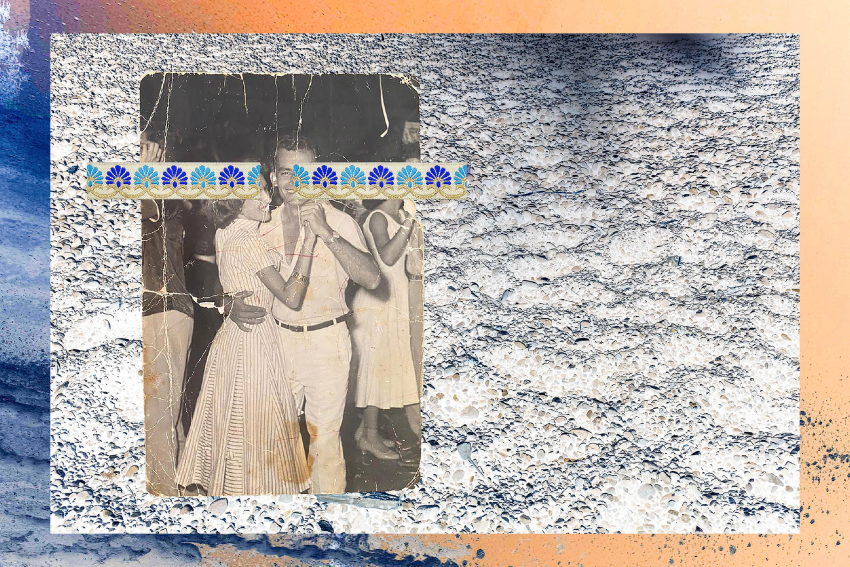
“Fly Me to the Moon”. This image combines three elements: two pictures taken in Seattle (water and stones) in 2019; a family photograph from the 1950s showing my smiling grandparents dancing at a ball; and a piece of Greek lace, symbolising traditional crafts and ancestry. Humans live as if there is another planet available that we can call ‘home’ after we have consumed this one. Fly Me to the Moon (and you can read it as if you were singing it!) is an SOS from a runaway train heading to this imagined planet. However, this new host planet simply does not exist. It is time for us to wake up and realise there is only one place where we all can live in joy and prosper: and that is right here. This series revolves around seemingly disparate images of wasted nature and assemblages composed from family photographs, effectively creating a family album from a time after the world has ended. © Juliana Jacyntho, Brazil, Shortlist, Professional competition, Creative, Sony World Photography Awards 2023
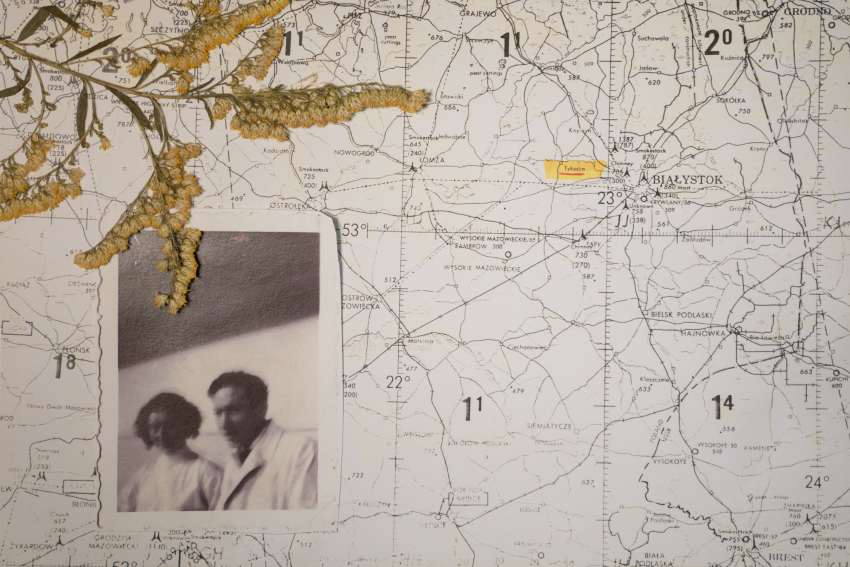
Piecing together my maternal grandmother’s and grandfather’s history. The photograph is of my great-grandfather with an unknown woman, still in Poland before the Holocaust drove him and my great-grandmother to flee. Highlighted in yellow on the map is the town where my grandfather’s family was born, also in Poland. My grandparents met in New York and have since relocated to Massachusetts, where I picked this Goldenrod. The last of the Holocaust survivors are dying, so it is down to this generation to remember their stories. These are stories filled with hardship and hope, loss and remembrance; stories hidden in documents, photographs and objects scattered like pieces of a jigsaw puzzle; stories rarely told, that bring a tear to your eye when the words finally spill out. My family is one of these stories. Both sides of my family are Jewish and they emigrated from Europe during the Holocaust. They leave behind memories of their lives in photographs, diaries, memoirs, official documents, letters and oral tales. By piecing together these materials, this project explores these stories and forms the memory of our history, a narrative shared by hundreds of thousands of families who survived persecution during the Holocaust. © Emily Steinberger, United States, Shortlist, Professional competition, Creative, Sony World Photography Awards 2023
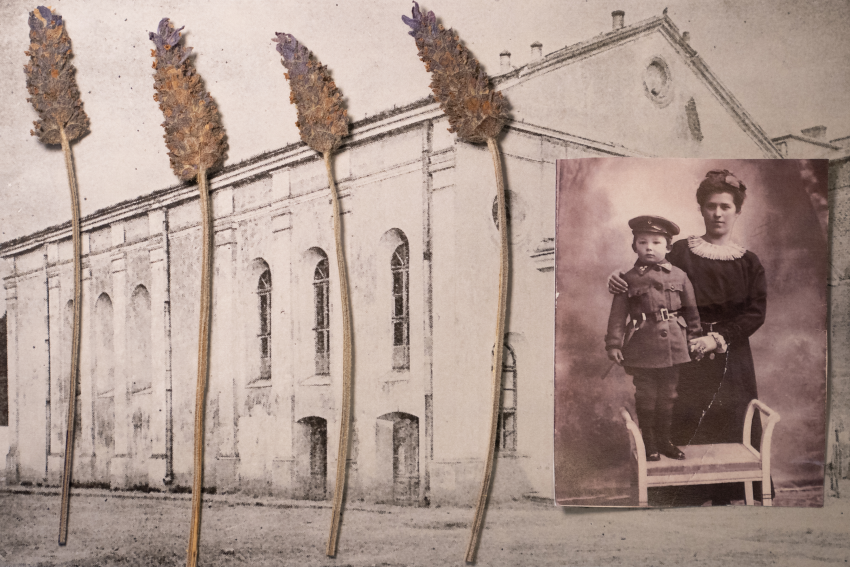
My maternal great-grandfather with his mother, on top of a photograph of the temple in Czortkow, Poland. Lavenders flanking the side of the temple represent the calmness of the pre-war years, before the city was wrecked and the Jews were killed. Although my great-grandfather’s entire family was killed during the Holocaust in concentration camps, he kept photographs and records of his family, including this one of him with his mother. The last of the Holocaust survivors are dying, so it is down to this generation to remember their stories. These are stories filled with hardship and hope, loss and remembrance; stories hidden in documents, photographs and objects scattered like pieces of a jigsaw puzzle; stories rarely told, that bring a tear to your eye when the words finally spill out. My family is one of these stories. Both sides of my family are Jewish and they emigrated from Europe during the Holocaust. They leave behind memories of their lives in photographs, diaries, memoirs, official documents, letters and oral tales. By piecing together these materials, this project explores these stories and forms the memory of our history, a narrative shared by hundreds of thousands of families who survived persecution during the Holocaust. © Emily Steinberger, United States, Shortlist, Professional competition, Creative, Sony World Photography Awards 2023
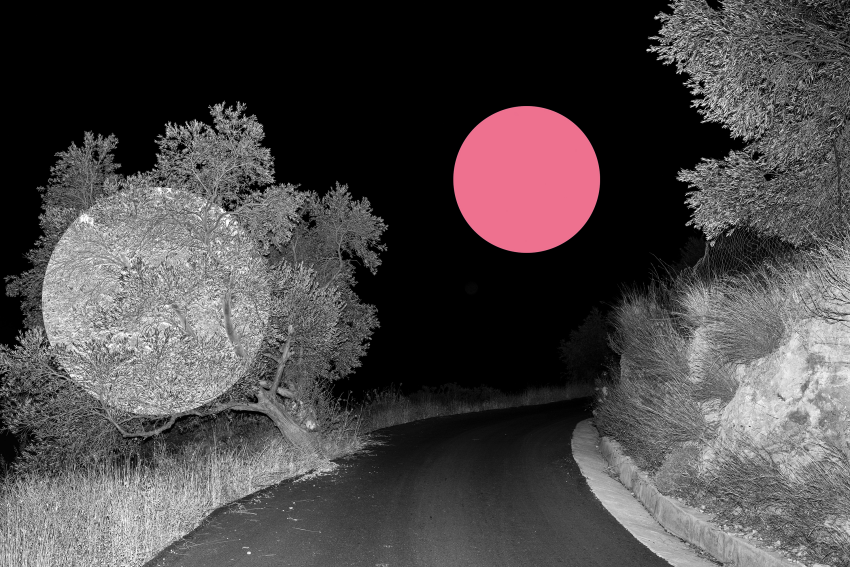
Manipulated images taken on a road in Crete. Investigations into the nature of photography and the image. © Richard Boll, United Kingdom, Shortlist, Professional competition, Creative, Sony World Photography Awards 2023
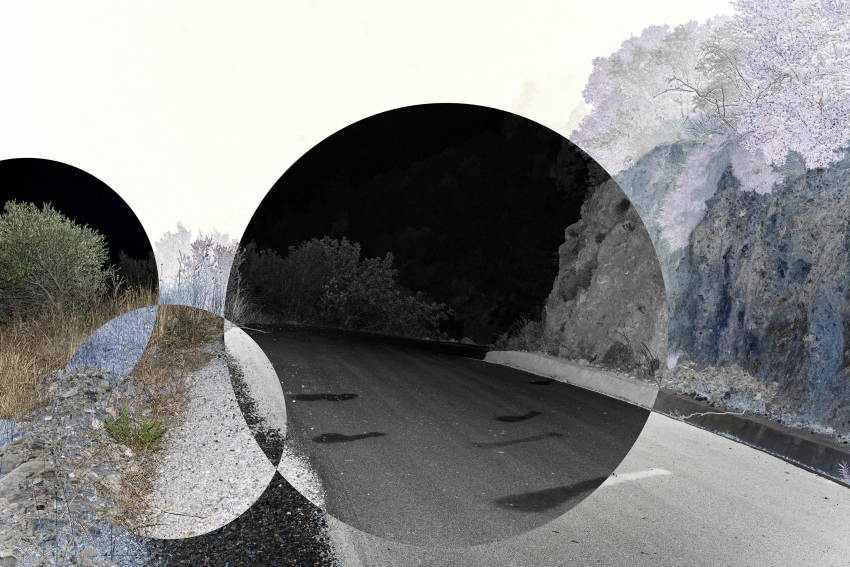
Manipulated images taken on a road in Crete. Investigations into the nature of photography and the image. © Richard Boll, United Kingdom, Shortlist, Professional competition, Creative, Sony World Photography Awards 2023
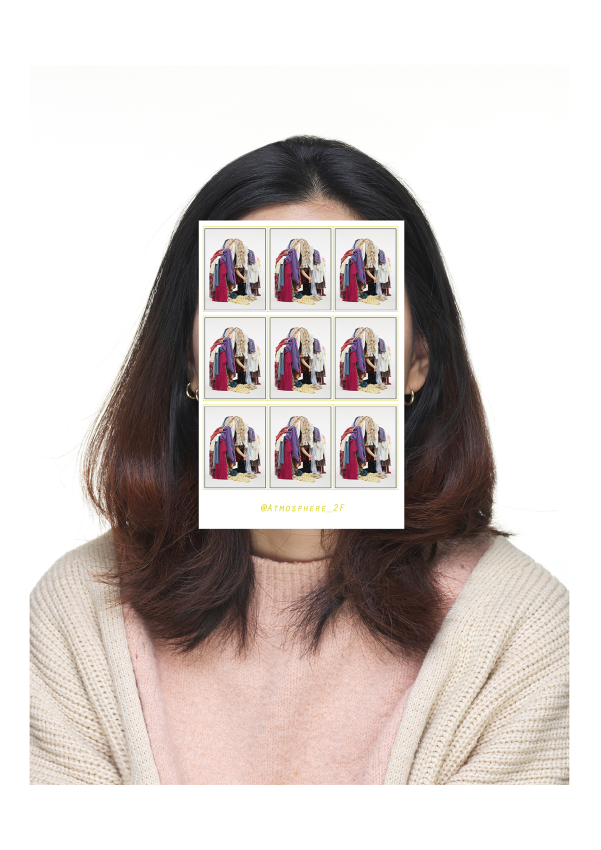
“Identification 4”. She wants to make a house of clothes. The clothes are important to her, they are how she presents her body. As though submitting a resumé to the world, unknown Korean artists share their stories and the stories of their work through ID photos without faces. The ID photo is an image of the upper body centred on the expressionless face looking ahead. It focuses on the face whose emotions are erased for the purpose of identification. The image standards vary slightly depending on the uses of the image, passports, visas, resident registration cards. I understand the ID photo as a medium that connects individuals within society, allowing them to quickly identify themselves and what they do, whilst also showing part of themselves as they transform internal image regulations to meet the external image standards. © Jae In Lee, Korea, Republic Of, Shortlist, Professional competition, Portraiture, Sony World Photography Awards 2023
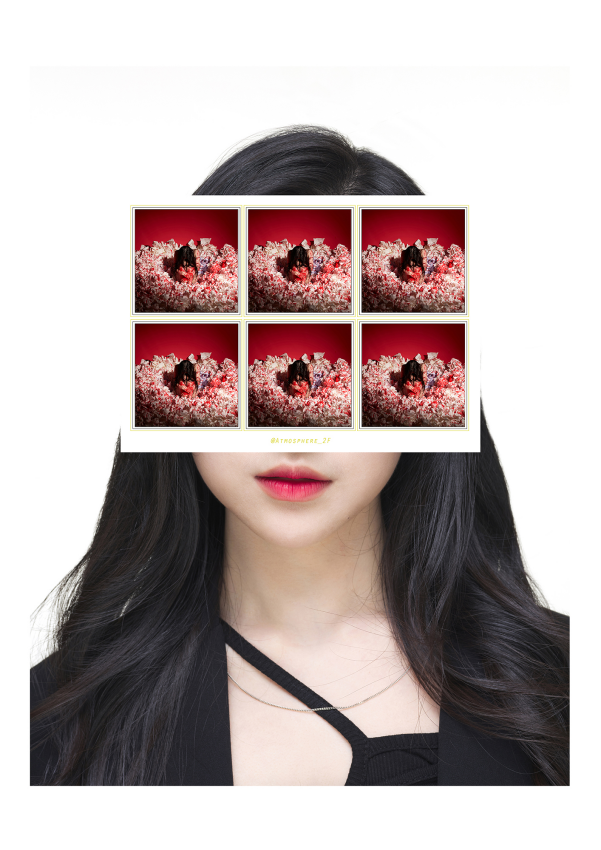
“Identification 5.” She expresses in red the things that have hurt her, that she holds on to. As though submitting a resumé to the world, unknown Korean artists share their stories and the stories of their work through ID photos without faces. The ID photo is an image of the upper body centred on the expressionless face looking ahead. It focuses on the face whose emotions are erased for the purpose of identification. The image standards vary slightly depending on the uses of the image, passports, visas, resident registration cards. I understand the ID photo as a medium that connects individuals within society, allowing them to quickly identify themselves and what they do, whilst also showing part of themselves as they transform internal image regulations to meet the external image standards. © Jae In Lee, Korea, Republic Of, Shortlist, Professional competition, Portraiture, Sony World Photography Awards 2023 DM/ ML


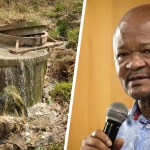


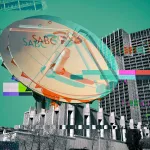













Great photos, but where can i see these photos?